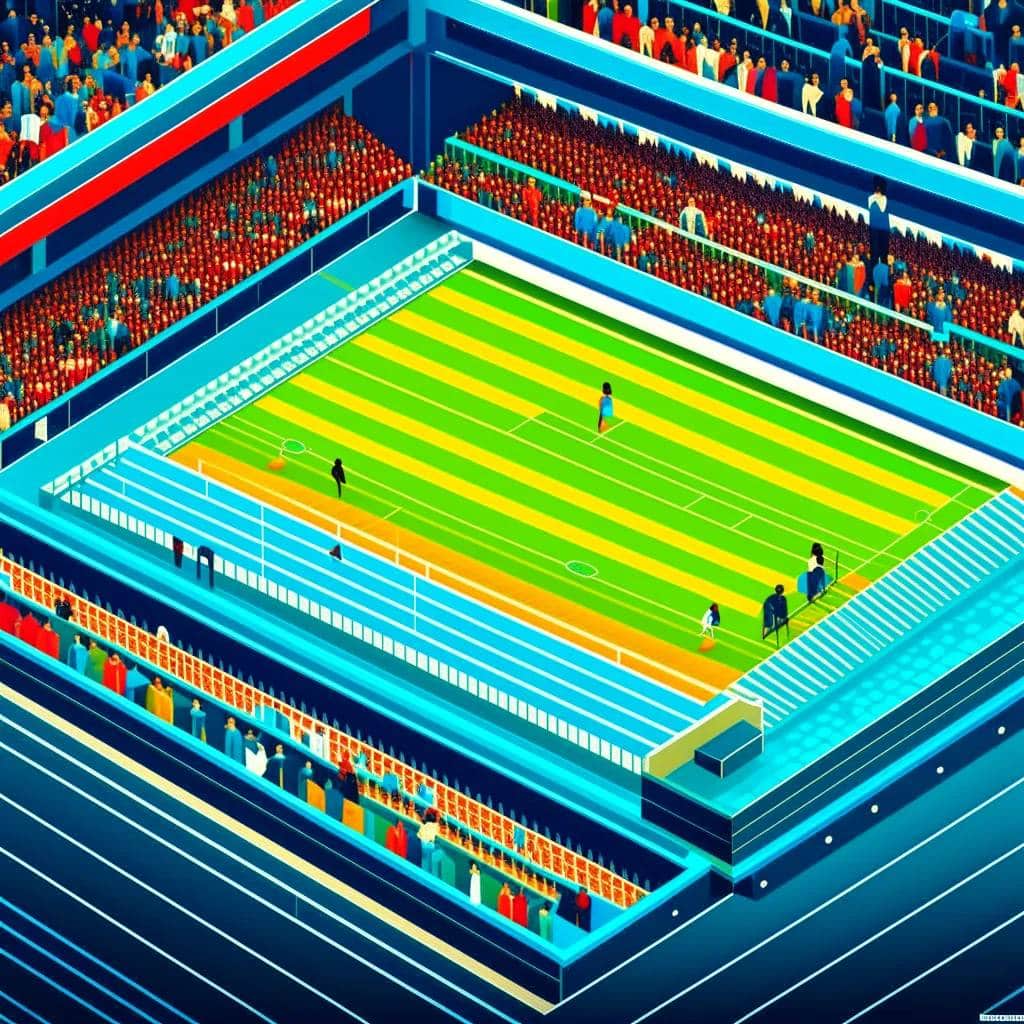Table of Contents
Ever wonder what are the iconic moments and legendary players that made the FIFA World Cup what it is today? Just examining fifa world cup history will show you more than just amazing goals, you’ll get to see controversies that have shaped the game to what it is today. As we look at the origins and early days of the World Cup to the tournament format evolution and cultural impact, we’ll see a wide array of experiences that have shaped the most prestigious international soccer tournament. Come with me as we journey through time and expose the evolution and importance of the FIFA World Cup — from its humble beginnings to how it’s impacted culture across the world.
Key Takeaways
- Exploring iconic moments and legendary players in fifa world cup history
- The evolution of the tournament format over the years
- How The FIFA World Cup Influences Culture And Politics Globally
Origins and Early Years
International soccer has been around since 1872, which is when we had the first official soccer game between Scotland and England. This was the start of international games, and since the sport grew more and more, and it was a game that was recognized internationally, we started to add more and more countries to play. Before the FIFA World Cup, soccer was played at the Olympics. In fact, the first FIFA supervised Olympic soccer tournament occurred in 1908. This was a precursor to soccer being a major international competition because…
The first FIFA World Cup occurred in 1930 (hosted in Uruguay). This was a huge deal for soccer. 13 countries participated in this event, and it was the start of international soccer being an actual thing.
In the 1934 World Cup (hosted in Italy), there was a big change – they also added qualifying stages. More teams were able to join since they allowed up to 16 teams. This meant the world was interested in having a tournament that was international. Lastly, Italy won in 1934 and became the first European team to win the World Cup, which meant that international soccer was truly international.
Another big moment as far as history goes for the World Cup was the 1950 World Cup by Brazil. In the final match, Brazil played against Uruguay, and in what is known as Maracanazo, Uruguay won against all odds and shocked Brazil. To this day, this game is one of the most memorable and notorious games in World Cup history, and is definitely one of the top events for any soccer fan.
Tournament Format Evolution
The FIFA World Cup, the best tournament in the world, has gone through a bunch of format changes over the years to include more and more teams and just make the tournament better in general.
The Expansion to 24 Teams
In 1982, the World Cup expanded to 24 teams. More teams = more countries have a chance of making it to the World Cup, and less countries are left out. This isn’t a sob story about how more teams in the World Cup waters down the competition. Football’s the world’s game, and it should be as inclusive as possible. This allowed teams from all over the world to show off their stuff, as the World Cup should be.
The Move to 32 Teams
We’re back to another change in 1998 when they expanded the tournament to 32 teams. They’ve kept it this way until the 2022 World Cup, allowing for more participation and a much more inclusive tournament. It’s only right, as the sport had grown in popularity and reach globally!
The 2026 World Cup Format
The World Cup in 2026, which the US, Canada, and Mexico are hosting, will have even more groups: 48 teams. With this huge expansion, they proposed a new format where there are 12 groups and 4 teams in each group. This means a total of 104 games, up from 64 games in the past.
The Journey to the Final
Under the new format, a team now has to play 8 games to win the World Cup, as opposed to the old 7-game format. The top 2 teams in each group and the 8 best 3rd place teams will make it to the new round of 32 knockout stage, which is 1 more round than the previous format.
Ensuring Fair Play
The reason that all teams in a group kick off at the same time on the final day is because no teams can collude. There’s been a few tournaments where teams have colluded, and this has affected the tournament. In fact, in the 1982 World Cup in Spain, there was a match that was so bad it was called the Disgrace of Gijón, because the match was so bad it looked like the teams were colluding. This is to protect the integrity of the tournament and make sure there’s no funny business.
The World Cup has changed over the past few years to make it a more inclusive, fair, and enjoyable tournament to watch and compete in. As soccer continues to become more popular worldwide, the World Cup will continue to change and adapt to what the international audience wants and expects.

Iconic Moments and Legendary Players
Golden Boot Award Evolution
Established during the first 1930 FIFA World Cup in Uruguay, the Golden Boot award is given to the top goalscorer of each tournament. This award is synonymous with international football, and for very good reason. In that first edition, Guillermo Stábile of Argentina was the first player ever to win the award when he scored an impressive five goals despite his team losing in the final to Uruguay.
Over the years, the Golden Boot has had to tweak their rules to make sure they can adequately – and fairly – award this trophy since there’s a possibility of ties. Originally, whoever had the most goals would take home the trophy. But as soccer evolved, so did the way the Golden Boot was awarded. In 1962 in Chile, for example, six different players had the same amount of goals. To prevent situations like these in the future, FIFA would add tie-breakers: number of assists, and if necessary, the fewest minutes played by the goalscorer to help break ties. This evolution of rules keeps the Golden Boot as a prestigious and sought-after prize, and has ensured that the recipients of the Golden Boot not only have goal-scoring prowess, but also playmaking ability as well.
Maradona’s Hand of God
Diego Maradona’s “Hand of God” goal is burned into the history books as one of the most disputed, yet iconic moments in soccer. In the 1986 World Cup quarterfinal between Argentina and England, Maradona scored a goal with his hand, and the refs didn’t catch it. He’d later describe it as “a little with the head of Maradona and a little with the hand of God,” a phrase that has become legendary.
That moment, no matter how you feel about it, didn’t take away from the fact that Maradona was amazing. Just a few minutes after that goal, he’d score the “Goal of the Century,” an amazing individual effort where he showcased his amazing dribbling skills and agility. Maradona’s wizardry on the field led Argentina to lifting the FIFA World Cup trophy that year, and even to this day, he’s celebrated as one of the greatest players to ever play the game.
Zidane’s Memorable Headbutt
Zinedine Zidane getting a red card for headbutting Marco Materazzi in the 2006 World Cup final is one of the most moments in soccer.
This happened in the 110th minute of the game after the two guys were jawing at each other. Zidane, who’s arguably the most graceful and creative player with the soccer ball, just completely lost it and lunged his head into Marco Materazzi’s chest.
Not only was this a dramatic end to Zidane’s storied career, it also cost France the game. They’d go on to lose to Italy in a penalty shootout as they were down their best player. Nevertheless, despite this distasteful exit, Zidane’s legacy is still very much intact. He was an incredibly gifted player and made a ton of contributions to the sport.
Brazil’s World Cup Dominance
Brazil’s won the World Cup a record five times – in 1958, 1962, 1970, 1994, and 2002. That’s insane! They’ve pretty much been good at soccer for as long as soccer’s been a thing. In fact, I think they might have invented the game. Their dominance in international soccer is a big reason why they’re one of the most respected countries in the sport.
They’ve been able to win so many World Cups for so long because of their rich soccer culture, and the extraordinary talent that has graced the team over the years. From the magic of Pelé in the early years, to the flair of Ronaldo in the modern era, Brazilian soccer is representative of innovation, creativity, and resilience.
For each World Cup win, there’s a unique story and unique heroes. The 1970 squad is widely regarded as the best team to have ever been assembled. They were known for their attacking prowess and tactical intelligence. The 1994 and 2002 squads were able to win in different eras because the game had changed so much in between those two tournaments. It’s their dominance in these tournaments that’s inspired countless of soccer fans and soccer players worldwide.
Individual Brilliance in World Cup History
The World Cup has been a stage where players like Pele, Franz Beckenbauer, Johan Cruyff, and Lionel Messi have made an impact and showcased their talents.
Pele won a record three World Cup trophies and was dominating the game with his play when he was a teenager. His playing style and skill at a young age revolutionized the sport. Beckenbauer was a fantastic player and leader, and changed not just his country’s fortunes but football’s tactical landscapes. Cruyff had a very unique, visionary playing style and philosophical approach to the game that he left a lasting legacy and influenced future generations. Nowadays, Lionel Messi is out there dribbling magically, passing with pinpoint precision, and scoring goals effortlessly. He has wowed fans and critics alike with all of his performances, none more so than when he took a leadership role in willing Argentina to winning the game. Each of these players have not only wowed fans but also redefined what’s possible on the football pitch, and the World Cup is always an exciting time to see who the newest legend is going to be.
Economic Impact on Host Nations
Every four years, the World Cup comes around again. And every time it does, countries all over the world vie for the opportunity to host it. The 2022 Qatar World Cup is reportedly costing them $200-300 billion. In the short term, this could mean a lot of economic activity, and Qatar’s 2022 world cup will bring 1% of their GDP in additional economic activity. And in the long term, it means they’ll get better infrastructure, more tourism, and potentially a more diverse economy.
But should you always host the World Cup? The economics might not be as good as it sounds. Most countries that host end up with more debt, and a lot of the facilities end up not being used anymore. In 2026, we’re hosting it in the U.S., Mexico, and Canada, and it’s expected to get a $5 billion economic impact across all of our cities. There’s a lot of planning that needs to go into it to make sure the benefits outweigh the costs if you’re thinking of hosting the World Cup.
Positive Economic Impacts of Hosting the World Cup
Qatar put in some 200-300 billion dollars worth of infrastructure ahead of the 2022 World Cup, and was a huge driver for Qatar’s non-hydrocarbon economy, boosting output growth by 5-9%.
The event had about 1 million visitors, most of whom stayed in neighboring GCC countries, which is a net positive for the regional economy. In terms of sheer economic impact, tourism spending and broadcasting revenue likely had up to 1% short-term GDP effect on Qatar’s economy, which is the same for other events held in other countries.
Potential Challenges and Considerations
While World Cup can bring a lot of money in a short amount of time, some host countries have been left with increased debt and hardly-used stadiums after the tournament’s over. Case in point, Brazil after the 2014 World Cup. It was a complete mess with cost overruns and estimates saying it was a major contributor to Brazil’s economic recession. With this being said, sustainable planning and having a long-term vision is really important so the World Cup can leave a positive mark on the countries that host it.
The 2026 World Cup and Economic Impacts
The 2026 World Cup, which will be held in the USA, Mexico and Canada, is expected to bring in a $5 Billion economic impact to the various host cities. That’s a pretty big number! This is good because on one hand, it’s a huge economic booster, but on the other hand, it also shows that you can’t just throw a bunch of parties and expect to keep your economic prosperity forever.
Cultural Influence and Global Impact
The FIFA World Cup is a phenomenon that brings the world together to celebrate soccer.
It’s an event that’s so much more than sports – it’s a cultural exchange. It’s a community. It’s a world unifying with each other over soccer.
And it’s the song
Of course, one of the most memorable ways the World Cup has ingrained itself in our culture is with its songs. Who doesn’t remember Shakira’s “Waka Waka” for the 2010 World Cup? It’s instant goosebumps, and these songs are so much more than just memorable soundtracks – they add to the entire festive vibes of the World Cup that people all over the world can enjoy.
The FIFA World Cup is also a place where social justice happens – it’s happened through various initiatives in the past, from fighting racism, to promoting inclusivity in soccer. It’s a platform to raise awareness and drive change, and in general we’re seeing soccer and football be a catalyst to drive positive change and overcome world challenges.
The World Cup is also a place where mascots are introduced – and these are loved by billions of fans for every World Cup. Ever since 1966, the mascots have been reflective of the host’s culture and heritage. They’re essentially ambassadors for their respective countries and for soccer fans worldwide.
And lastly, the FIFA World Cup is also a place for diplomacy and international relations. With soccer being a language that’s common in every country, it’s been a way for countries to speak to each other and get along with each other. It’s been a platform for people to learn about different cultures, and a sport that’s bridged cultures and countries.
And of course, with the media coverage and broadcasting rights, the FIFA World Cup is a sporting event that’s so important that it’s grown to become the most-watched sporting event in the entire world. People from all over the world tune in to watch the drama, the passion, and the unity of the World Cup. It’s a worldwide event, and it’s celebrated by people who aren’t even fans of soccer.
World Cup Cultural Impact Table: From Anthems to Diplomacy
| Aspect | Description | Result |
|---|---|---|
| Cultural Phenomenon | Brings people together | Crosses sport border |
| Theme Songs | Songs like Shakira’s “Waka Waka” | Grabs the event energy, is worldwide hits |
| Social Change | Campaigns to end racism, promote inclusivity | Platform for change and progress |
| Mascots | Started in 1966 | Reflects host country, gives fans something to rally behind |
| Diplomacy | Strengthens international relations | Common ground for conversation and cultural exchange |
| Media Coverage | Most watched sport event worldwide | Billions of views, a lot of people, higher cultural significance |
Evolution, Icons, and Impact: The World Cup Journey
The article goes into the origins and early days of international soccer, going all the way back to the 1872 Scotland vs. England match and the first FIFA World Cup in 1930. It goes into legendary moments like Maracanazo in 1950 and format changes, from 24 teams to 32 teams and the upcoming 48 team format in 2026. Legendary player accomplishments, economic impacts to host nations like Qatar, and the cultural influence of World Cup to the world are also covered, showing how much the tournament has changed, who’s who in the tournament, and how big of a global footprint they’re leaving behind.
Frequently Asked Questions
Q1: When did the first official international football match take place?
The first official international soccer game was played in 1872 between Scotland and England, where England beat Scotland 1-0. And thus international soccer was born.
Q2: What was the format change introduced in the 1934 World Cup held in Italy?
The 1934 World Cup in Italy was the first World Cup to change the format. They added a “qualification” round which allowed 16 teams to play, and showed how fast the sport was gaining in popularity.
Q3: What is the significance of the Golden Boot award in the FIFA World Cup?
The Golden Boot award is given to the top goalscorer of each World Cup, showing goal-scoring skill and playmaking flair.
Q4: Can you describe an iconic moment from the 1986 World Cup involving Diego Maradona?
In the 1986 World Cup quarterfinals for soccer, Diego Maradona scored what he’d later call the ‘Hand of God’ goal against England. But did you know he followed that up with the ‘Goal of the Century’?
Q5: What economic impacts do host nations experience from hosting the FIFA World Cup?
Host countries get a quick shot of cash in the arm in the short term, infrastructure investments, and can gain long term benefits like better infrastructure and more tourism, but they have to carefully plan for this to make sure there’s no negative side effects.
Q6: How has the FIFA World Cup influenced global culture and social change?
The FIFA World Cup brings people from all over the world together because they all love soccer, it’s a cultural exchange, there’s social programs that fights against bad things like racism, and that the beautiful game is indeed the beautiful game and can actually make the world a better place, and even foster peace.
Q7: What is the significance of World Cup mascots in the tournament’s cultural influence?
World Cup mascots, which started in 1966, are symbols of each tournament, encompassing the culture and heritage of the host nation, and help create identity, and pride among fans.
Q8: Why is the 2026 World Cup format significant compared to previous editions?
In 2026, the World Cup will be a 48 team tournament, with 12 groups of four, and there will be 104 games played. There will also be a play-in round to get to the round of 32 knockout stage. So it’s a lot more inclusive and fun for everyone.




